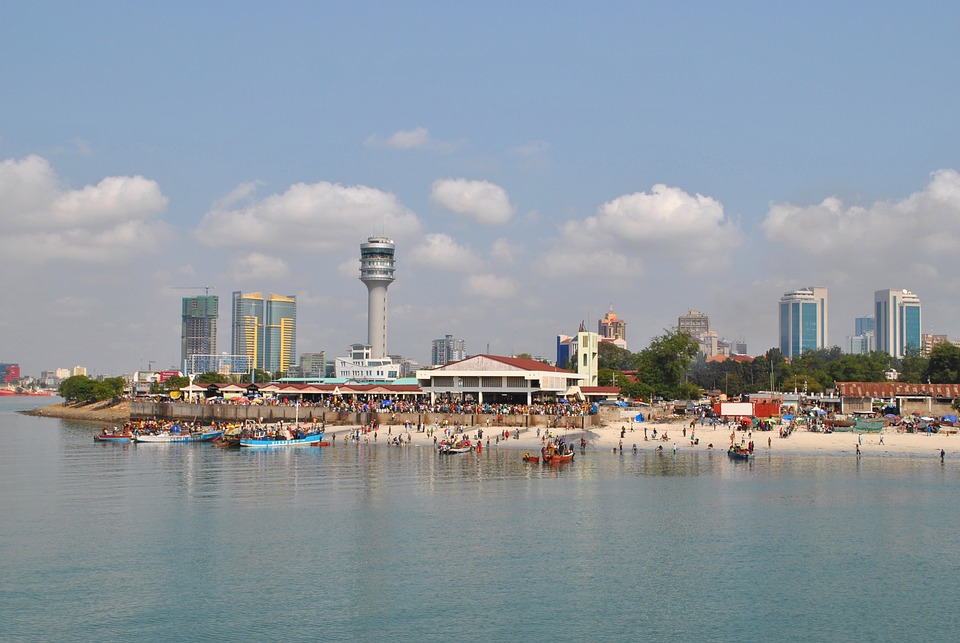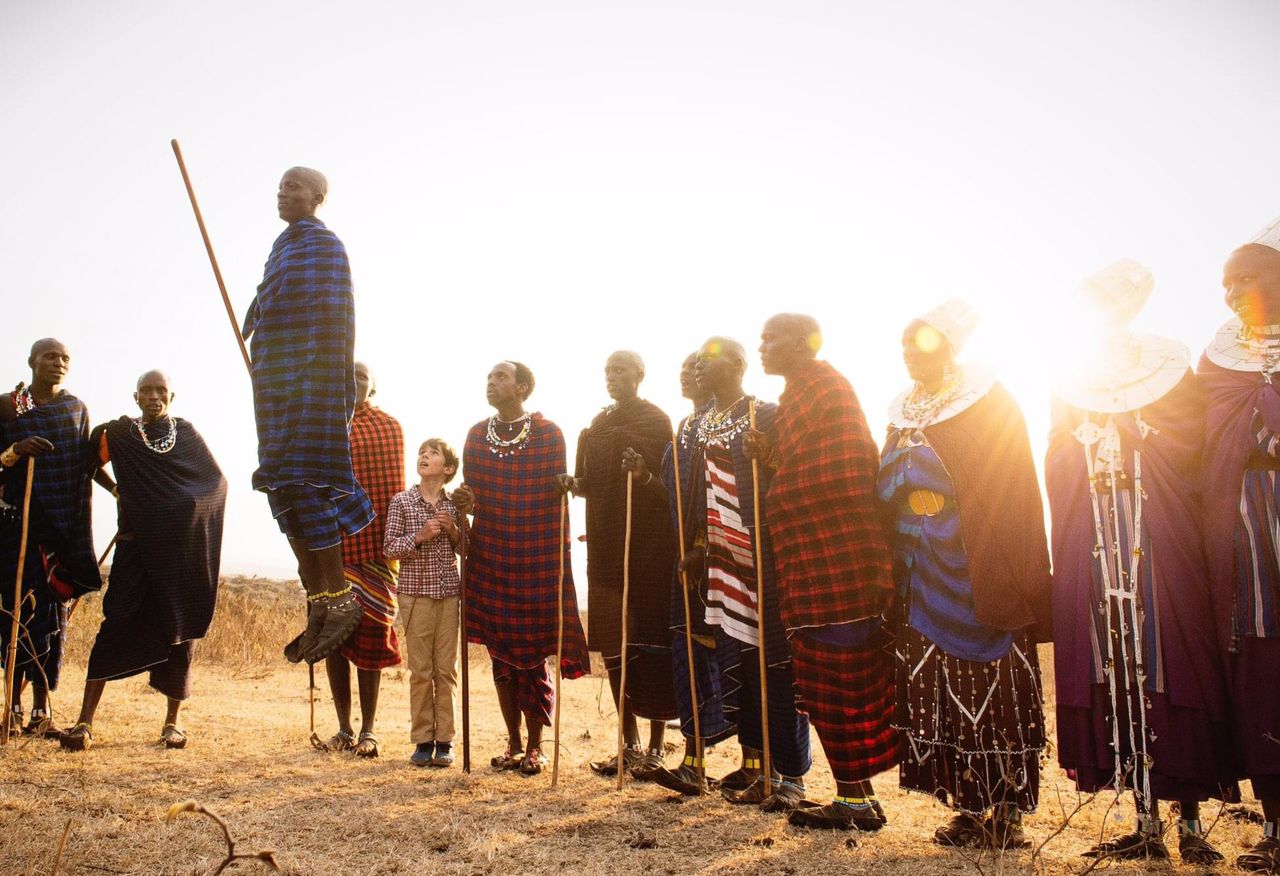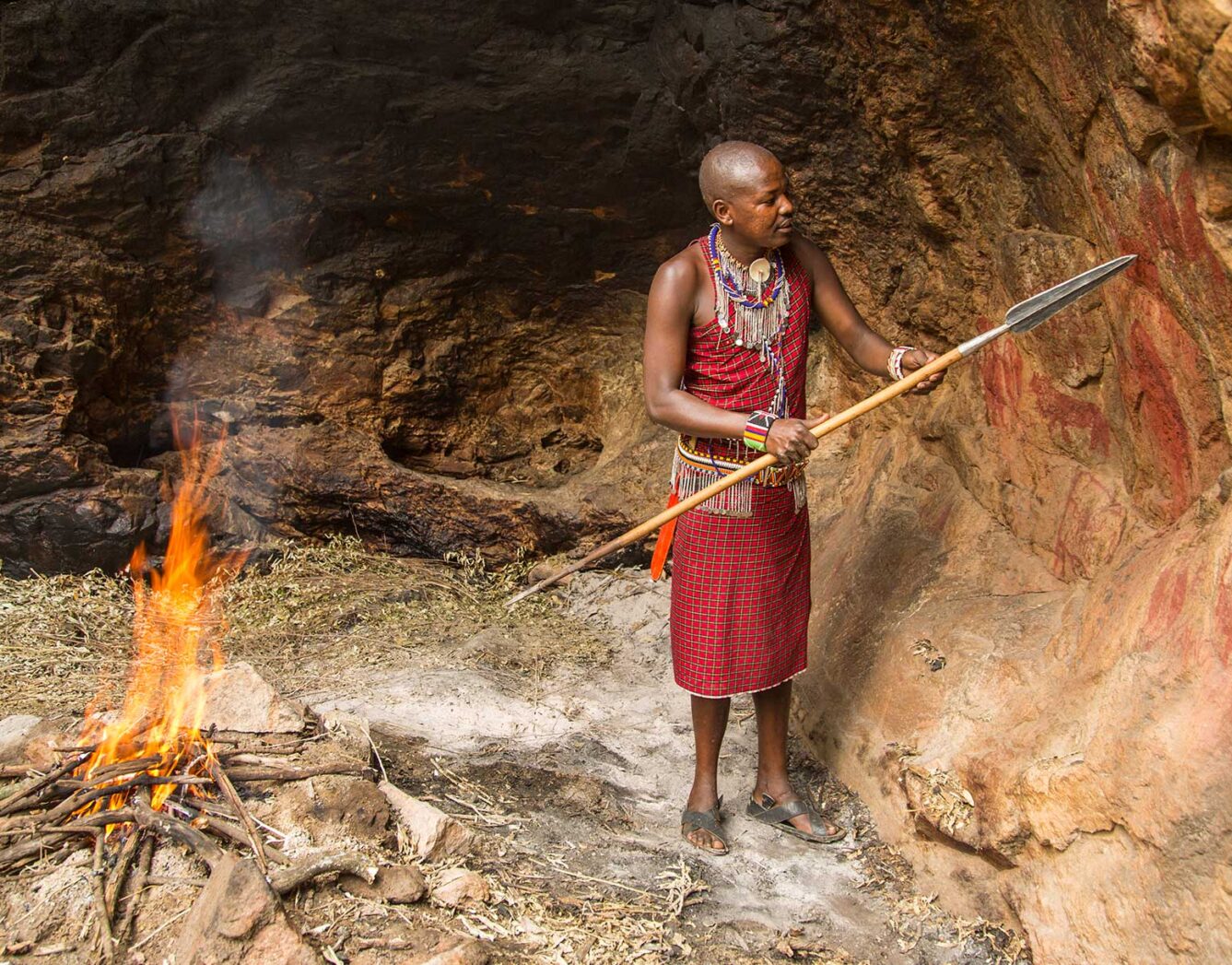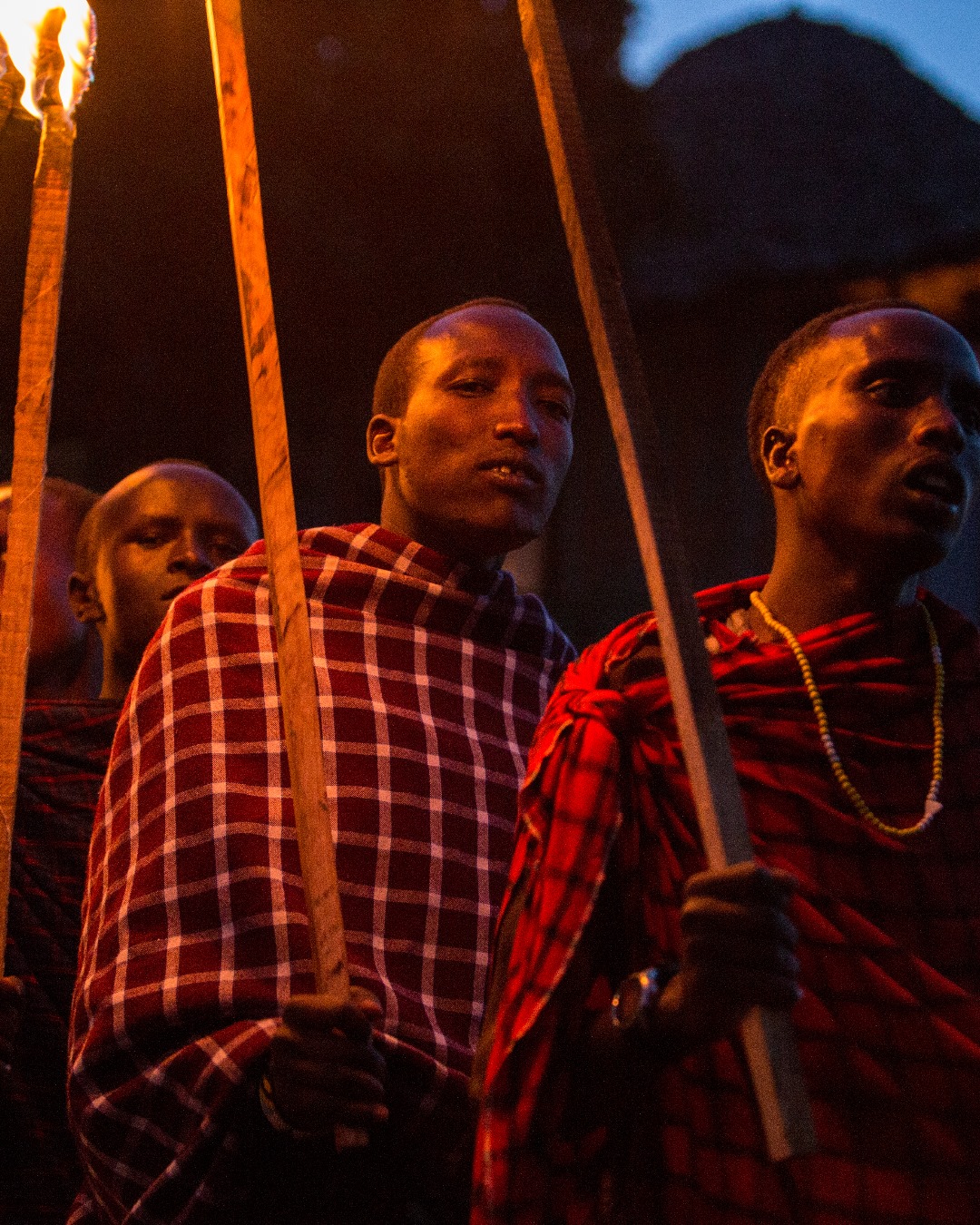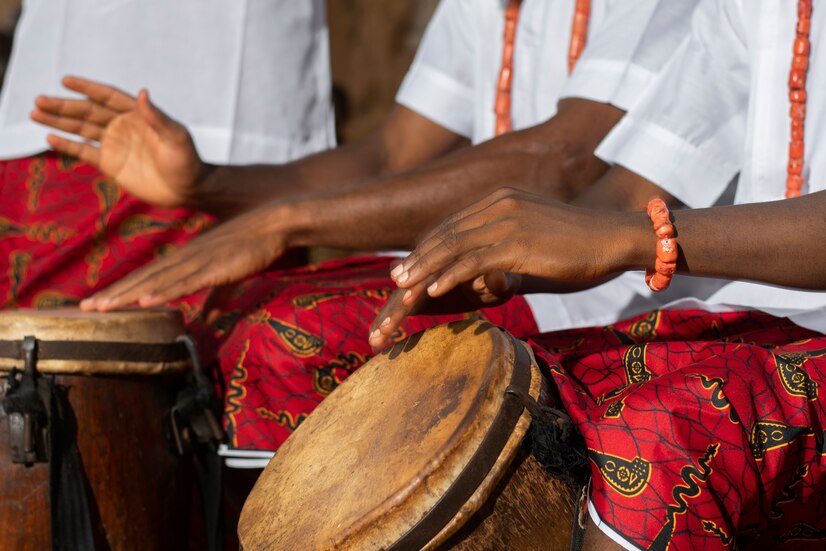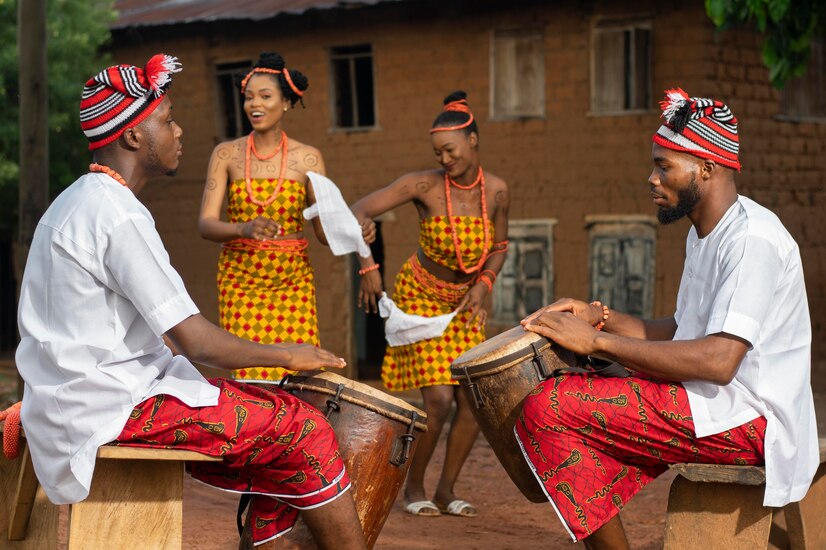General Information About Tanzania
If you are planning to visit Tanzania, the question of “How to plan a trip to Tanzania” must come to your mind. Keep reading this article to find out how to plan your life-changing safari experience in Tanzania. Tanzania is a country so wealthy that it would practically take years to document all the resources. Not only is the country proud to bear witness to the highest and largest free-standing mountain in the world but also to the rich and diverse wildlife concentrations, minerals, and other resources available. If Africa’s tourism opportunities were to be summarized by one single country that country would be Tanzania.
- Population Tanzania has a population of around 47.6 million (UN, 2012). Native Africans constitute 99% of the population
- Climate: Tanzania has a tropical climate along the coast but it gets temperate in the highlands.
- April & Mid – May = Long rains (Green Season)
- June – Sept = Cool season
- Nov – Dec = Short Rains
- October – March = Hottest season
The range of Temperatures in Tanzania is fairly limited and always hot, running from 25 to 30 degrees C on the coast while the rest of the country apart from the highlands runs from 22 to 27 degrees C.Time: GMT + 3 hrs
- Electricity: 240 Volts AC, 50 – 60 Hz
- Language: Kiswahili & English
- Area: 945,087 sq km (364,900 sq miles)
- Monetary Unit: 1 Tanzanian shilling = 100 cents
- Main exports: Gold, sisal, cloves, coffee, cotton, cashew nuts, minerals, tobacco
- GNI per capita: US $540 (World Bank, 2011)
- Internet domain: .tz
- International dialing code: +255
Currency:
Tanzania Shillings; however you are advised to carry American Dollars. Money changers do accept major convertible currencies including the EURO and the Japanese Yen. Travelers' Cheques may be acceptable in some places, but not in the remote countryside, Major Credit Cards may also be acceptable in some large Hotels, however, it is advisable to carry Cash US Dollars, which you will change on arrival. System of government: Tanzania is a multiparty democratic republic. Capital: Dodoma, with a population of around 325,000, is the official capital while Dar-es-Salaam, with a population of nearly 4 million, serves as the administrative capital of the country.
Clothing:
Cotton clothing(preferably in neutral colors) is recommended, but do try and keep whites to a minimum, as white can attract bugs at night. Bright-colored clothing should be avoided if possible. Shorts are ideal for walks and warm midday periods. Long trousers can be worn at night to protect from mosquito bites. Dinner dress in the evening is also very casual. A lot of the lodges will offer a laundry service, but if this is not included in your rate, then it will be priced on a ‘per item’ basis, which can become quite expensive if you decide to put all your dirty laundry in to be cleaned!
Comfortable walking shoes, trainers, or hiking boots are advisable if you want to go on a bush walk - otherwise, sandals are ideal to wear at meal times and around the lodge area. In addition, during the rainy months, a waterproof jacket is of course a good idea. If you are visiting during the Southern Hemisphere summer months (so from March to May) a warm sweater is useful for the cooler morning and evening temperatures when out on game drives - you also have the ‘wind chill factor of being on a moving vehicle. During the Southern Hemisphere winter months (so between June and September), you will certainly need several warm layers for your game drives, including a hat, scarf, and gloves, as it can be extremely cold when the sun goes down in the evenings, and when you first set off on the morning game drive. It is always better to have too many layers for warmth than not enough!
Other Essentials:
A strong sunblock, a sun hat, sunglasses, and lip balm are good ideas to have with you when out on game drives in the sun. Also, make sure you have your camera, binoculars and spare camera batteries for the game drives too. If you have a video camera, it may be a good idea to take a spare battery for this as well. An insect repellent is necessary, especially in the evenings. Most lodges do supply repellent for guests to use, but just in case it would be worth taking this with you. Of course, if you are going on a safari in a malaria area, don’t forget your malaria tablets! You will need to consult your doctor at least 6-8 weeks prior to travel to see what course of malaria tablets they recommend, and when you should commence the course.
Luggage Restrictions:
If you are getting to your safari destination by charter flight, please check what the baggage weight allowance is before you arrive to check in. For most charter flights, the limit is 15 kg, and most airlines do require your luggage to be in soft bags (to enable the pilot to easily stow the luggage in what is sometimes a small hold in the plane).
Self-Drive Safaris:
In addition, a good field guidebook on the animals of the region is an excellent item to have in the car with you, along with plenty of water and other refreshments.
Wildlife of Tanzania:
The wildlife of Tanzania refers to the fauna of Tanzania. Tanzania contains some 20 percent of the species of Africa’s large mammal population, found across its reserves, conservation areas, marine parks, and 17 national parks, spread over an area of more than 42,000 square kilometers (16,000 sq mi) and forming approximately 38 percent of the country's territory. Wildlife resources of Tanzania are described as “without parallel in Africa” and “the prime game viewing country”. Serengeti National Park, the country’s second-largest national park area at 14,763 square kilometers (5,700 sq mi), is located in northern Tanzania and is famous for its extensive migratory herds of wildebeests and zebra while also having the reputation as one of the great natural wonders of the world. The Ngorongoro Conservation Area, established in 1959, is a UNESCO World Heritage Site and inhabited by the Maasai people. Its Ngorongoro Crater is the largest intact caldera in the world.
The national parks are also part of the wetlands of Tanzania. The wild animals tend to be closer to the wetlands, particularly the water-loving species such as the hippopotamus, waterbuck, common warthog, elephant, crocodile, and sitatunga as well as water birds such as flamingos and ducks. Since the colonial era, wildlife conservation in Tanzania has been the prerogative of the government. Under this structure, the use of wildlife resources by local communities had always been restrictive, causing increased rural poverty and poaching. In recent years, the Tanzania National Parks Authority (TANAPA) has initiated corrective actions to involve the local community in conservation efforts, which are aimed at contributing to local economies by way of equitable benefits sharing.
What to Take on Safari?
Before getting started, let’s have a little Talk about Tanzania! Tanzania offers the quintessential safari experience to thousands of tourists. This is not the only reason that can make you wish to visit; amazing landscapes and beautiful beaches also await. The abundance of the amazing culture of more than 120 tribes provides a vibrant mix of social life. Being able to live together in spite of their tribes, Tanzanians have become the most friendly people to interact with. Walking along the streets is safe and people will be smiling and talking to you as long-time friends. Do you like to experience high-altitude adventures? Tanzania is at your service. There are an unlimited number of mountains to conquer, such as Mount Kilimanjaro, the highest free-standing mountain in the World.
FAQ
Best Time to Visit Tanzania
The best wildlife viewing months in Tanzania are during the dry season from late June to October. The best chance of seeing the wildebeest migration in the Serengeti is during June and July and the time to see the wildebeest calving is late January to February. The Southern and Western Circuit Parks are best visited during the dry season (June to October), unlike the more popular Northern Circuit Parks which can be visited year-round. Tarangire is the only exception since its wildlife viewing is considerably better in the dry season as well.
June to October - Dry Season
- June and July are the best months to see the wildebeest migration.
- Animals are easier to spot since they concentrate around waterholes and rivers and there is less vegetation.
- There are fewer mosquitoes because there is little to no rain. The skies are clear and most days are sunny.
- Even though most tourists visit during the dry season, the parks still don't feel crowded, except for the Seronera area in the Serengeti and the Ngorongoro Crater.
- Mornings and nights get cold. It's recommended to bring warm clothing for morning game drives in open vehicles during the months of June, July, and August
November to May - Wet Season
- Late January to February is the time to see the calving in southern Serengeti. This is an excellent time to see predator action.
- The scenery is green and beautiful. It's low season, meaning lower rates and less crowded parks.
- Although wildlife is easier to spot in the dry season, you'll still see plenty, and most northern circuit parks offer good year-round game viewing.
- Migratory birds are present and birdwatching is at its best.
- Except for March, April, and May, rains are mostly short afternoon showers and seldom have a negative impact on your trip.
- March to May is the peak of the wet season.
- Most big wildlife has migrated out of Tarangire NP and game viewing in Katavi, Selous, and Ruaha is clearly better during the dry season.
Best time to go to Tanzania by major park
The Serengeti and the Ngorongoro Crater offer good wildlife viewing throughout the year. June and July are the best months for seeing the migration and February is the best month for the wildebeest calving. The dry months offer good game viewing throughout Tanzania. Tarangire and the southern and western circuit parks (including Katavi, Selous, and Ruaha) are best visited in the dry season, from June to October.
How to plan a trip to Tanzania? Now let’s get down to our question in particular.
If you are asking yourself how to plan a trip to Tanzania, then you should try to familiarize yourself and get a good understanding of this beautiful African country. Tanzania is the best safari country in Africa, but this fact doesn’t mean Tanzania offers only safari activities. Planning for the best safari experience while saving your wallet should be your significant intention. Going for an African safari can be very expensive., With proper planning and the right decision-making, you can save time and money and enjoy the safari of your dream to the fullest.
Here is what you should consider when planning your trip to Tanzania. Don’t worry, we will talk about each as you read on.
- Tanzania Destinations
- Your Interests
- Where to stay
- What to Pack
- Getting Around
- Visa/Passport Requirements
Do I require a visa?
Visas are required to enter Tanzania as in other East African Countries – Kenya and Uganda. They can either be obtained in advance through the various Embassies/High Commissions abroad, Consulates, or at the airports or other ports/borders of entry. The process is fast and easy and all one requires to have is a valid passport (at least six months). Where and how can I apply? – see
Tanzania VISA section
Transport To Tanzania.
Airport and Arrival Information; Three International Airports, Dar-es-Salaam, now known as “Julius Nyerere International Airport – JKIA” and “Kilimanjaro International Airport – KIA” and Zanzibar International Airport. See flights coming to Tanzania and Zanzibar – see
Flights coming to Tanzania To begin safaris in Northern Tanzania, most visitors are advised to book with Airlines whose Arrivals & Departures are at KILIMANJARO INTERNATIONAL AIRPORT (KIA) which is 45 minutes drive from Arusha town. See International Airlines such as AIR TANZANIA, KLM Royal Dutch with daily Flights out of Amsterdam into Kilimanjaro and Dar es Salaam, GULF AIR, KENYA AIRWAYS, ETHIOPIAN AIRLINES, and Emirates. It is also possible to get flights arriving in Nairobi (Kenya) from where you can make arrangements to transfer to the nearby city of Arusha.
Book here your ticket
FERRIES
Ferries: Boat and Ferries to Zanzibar and Mafia, see
ferries to Zanzibar Tanzania receives a handful of tourists each year. This is because of its unnumbered tourist activities which can be found across the country. Your plan to visit Tanzania should consider the four Circuits of Tourism in the country. These are Northern, Southern, Eastern, and Western Circuits.
Northern Circuit
Northern Circuit is the most popular tourist destination because of the famous national parks; Serengeti, Ngorongoro Conservation Area, and Mount Kilimanjaro. Lake Manyara and Tarangire National Parks are also added to the list of the Northern Circuit. Serengeti provides a world-class safari experience, possibly more than any park in the world. It is within Serengeti where you can witness the spectacular migration of Wildebeests and Zebras in millions, accompanied by the predators hunting them. Ngorongoro Crater is the largest caldera in the world found in the Ngorongoro Conservation Area. The crater is home to many birds and animal species found in the park. Maasai people also live within the Ngorongoro Conservation Area as well as the first mankind of this world was said to have lived here in a place called, Olduvai Gorge. Many mountain climbers have a dream to climb Mount Kilimanjaro and thousands of tourists have already conquered the summit. The experience of climbing this majestic mountain is unimaginable!
Mount Meru, Arusha, and Mkomazi National Parks are also in the Northern Circuit. For first-time safari-goers, the northern Tanzania destinations can provide you with a decent experience especially if you do have not enough time. The mostly used itinerary is from 3 to 9 days, but you can add many days as long as it serves your interests. If you are struggling with how to plan a trip to Tanzania, the Northern Circuit should be on your first list. This is because it has many parks and other tour activities. Also, the national parks on this circuit are relatively closer to each other and accessible all year.
Book your safari now here
Southern Circuit
The Southern Circuit includes parks like Mikumi, Udzungwa Mountains, Ruaha, Kitulo National Parks and Selous Game Reserve. Selous has recently been upgraded to a national park with a new name, Nyerere National Park. For a traveler who likes a long-distance drive while enjoying a remarkable landscape, the southern circuit is a perfect choice. Southern Circuit is recommended to second-time visitors. Being a less-visited destination than the Northern Circuit, the Southern Circuit is a perfect place for those who would not like the crowd of the Northern Circuit.
Book your safari now here
Western Circuit
The Western Circuit is famous for Chimpanzee Tracking experience. Major parks of this circuit include Gombe Stream, Mahale, and Katavi National Parks. Lake Tanganyika borders the western circuit on its eastern part and the neighboring country, Congo DRC on the west. This circuit is recommended for Chimpanzee Tracking in Gombe National Park. Katavi National Park is also an amazing place to do a safari and it is an alternative safari experience when you are in the west of Tanzania. Animals like Leopards, Lions, Buffaloes, Elephants, zebras, Waterbucks, Impalas can be found in Katavi National Park.
Book your safari now here
Eastern Circuit
If you want to experience holiday vibes along the Indian Ocean, this circuit will be your top-notch. Eastern Circuit includes the largest city of Tanzania, Dar es salaam, the beautiful Zanzibar, Mafia Islands and Saadani National Park.
Book your tour now
Immunizations / Vaccination:
What medical precautions should we take?
Vaccination requirements change from time to time. We suggest you consult your local doctor or health department for information on the latest health precautions. Currently, shots against Yellow fever and cholera are recommended but not mandatory. As a precaution we usually advise antimalarial drugs to be taken before, during and after your visit to East Africa. Also, if you are on prescription medication, please ensure you have an adequate supply to last the duration of your stay and a copy of your prescription(s).
Malaria: your risk of malaria may be high in all countries in East Africa, including cities. See your health care provider for a prescription anti-malarial drug for details concerning risk and preventive medications.
What should I know about Safari? Everyone agrees that there is substantial planning required by those considering a safari in Africa.
How far in advance should I book my safari?
It is better to book as far in advance as possible to ensure availability at the time you wish to travel, especially during the high/peak seasons – June to Oct and Christmas/New Year season.
What should I take on a safari? (Should be used as a guide only)
As you will want to capture as much as possible of this amazing tour, don’t forget a camera, camcorder with lots of films, tapes, and replacement batteries for all these. A torch light would come in very handy. Sunglasses, hat, sun lotion, lip-balm, insect repellents and your own toiletry requirements, small first-aid kit, a spare pair of glasses or lenses if you are using one. Don’t forget a swimming costume and you might want to include a good book for the relaxing hours. Sleeping-bags and towels if you are planning for camping safaris must be included.
What should I take for mountain climbing? (Should be used as a guide only)
Sunglasses/Snow goggles, Rucksack & day pack, 3-4 season sleeping-bag, Insulation pad, Balaclava or woolen hat, Long sleeved shirt, Several pairs of socks, Gloves, Waterproof trousers & jacket, Warm sweaters, Anorak/raincoat, Gaiters, Water-bottle, Wooden walking stick, Hiking boots, Pair of light walking shoes, Warm scarf, Toiletry requirements, Flashlight with batteries, Sun protection cream, Small first aid kit, Lip salve, A whistle and some plastic bags. Baggage Limit: 1 bag 15kgs maximum. It is advisable to have your own insurance covering, travel, medical, baggage and personal injury. Persons undergoing medical treatment should obtain approval from their doctor prior to booking the trek. The trek is taken at the clients own risk.
What kind of food do I expect during the trip?
The quality and variety of food available on safari will be a pleasant surprise for our clients. Most lodges serve meals in buffet-style. The food is prepared according to the western-tastes, and includes some local cuisine too. If a camping safari is chosen, fresh meat and produce is prepared by the expert chefs accompanying the clients to the highest standards. Special dietary requirements such as vegetarian or diabetic meals can be easily arranged with prior notice. A vegetarian or vegan may wish to bring along some alternative protein sources. Persons with multiple food allergies, it is advisable to bring along supplemental snacks. Please notify us of any possible dietary restrictions along with booking confirmation
Is drinking water safe?
In some places tap water is safe, but generally, it is not advisable to drink or brush your teeth with tap water. Bottled water is available everywhere and in almost all Lodges and Hotels and all super markets. On treks and safaris, it is better to carry sufficient bottled water.
What Type of Clothes to take? :
For safaris, especially in Northern Tanzania (Serengeti, Ngorongoro, Lake Manyara, Tarangire and Arusha), during the day, light clothing is recommended with sturdy shoes and canvas hats. During the night in areas like Arusha and the Ngorongoro Highlands, where the altitude is between 1500 – 2500 Meters; a cardigan or pullover may be essential. In the same pack, remember your sun cream, lotions, sun glasses, a pair of binoculars, and a camera with rolls of film.
What would the accommodations be like?
Wide range of accommodations is available to suit your budget, lodges, hotels, tented camps, permanent camps to name a few. Most hotels are a nice blend of luxury, ambience, and offer picturesque views. Once an inquiry is submitted, we provide you with a detailed list of accommodations available to suit your requirements.
Advice regarding photography?
For wildlife photography, a 200 mm zoom lens is the smallest that you should use, A 300-400 zoom is preferable. For bird-watchers, a 500mm or larger is necessary, and a wide-angle lens would be ideal for scenic shots. Bring extra camera and flash batteries and plenty of film – you may find these quite expensive and difficult to obtain locally.
Shopping Around: Locally made products are widely sold at reasonable prices. Ask your local Guide for the best offer to buy yourself or your friend items like; Batiks and Tingatinga paintings, Ebony carvings such as cutlery, bracelets, furniture and sculptures. Others include Maasai belts, rings and necklaces made of colorful beads, Khanga for women’s wrap around and Jewels to include Tanzania’s special Mineral – Tanzanite.
Do I require Travel Insurance?
We strongly recommend that you take out all of the necessary Travel Insurance before commencing on your journey.
Know Your Interests
Your interests have a huge influence on how to plan a trip to Tanzania. Make sure you know what you would like to achieve on your trip to Tanzania. Knowing what your wishes are can help you choose your bucket list place that you wish to visit. If your interest is to see the Big 5 Animals and witness the Great Wildebeest Migration in just less than 5 days, the Northern Circuit can be your perfect choice. If you wish to experience a safari in less crowded parks, then the Southern Circuit Parks should be on the list. For all interests that include beach activities, the Eastern Circuit should be in the places to visit. Your interests also can help you to determine how much you are going to spend on your trip to Tanzania. As you prefer a more comfortable and luxurious service is how you will have to pay more.
Where to Stay (Accommodation)
Sometimes, a safari can make you exhausted and tired. Choosing the best accommodation based on your interest is very important. When planning for accommodation, consider the comfort levels for your overnight stay. In Tanzania Parks, there is one to three levels of accommodation, depending on the park you will visit and your budget. Three popular accommodation types are budget, mid-range or standard accommodation and luxury accommodation. In big cities and Zanzibar there is also high-end accommodation for super luxurious services. In order to have an amazing experience at a reasonable cost, standard accommodation is the best for anyone who wishes to have the best trip. Avoid budget accommodation if you want the best overnight stay. If you don’t mind spending money, try the luxury or high-end types of accommodation.
Book now here your Hotel in Tanzania
What to pack
Don’t make the mistake of overpacking on your trip to Tanzania. Choose your items thoroughly and keep luggage as simple as possible. This is because most of the local transport like flights and safari vehicles have a limited weight size on each guest’s luggage. Packing simple and basic kinds of stuff can help you save extra charges that can be added to excess weight. Readout about What to Pack for a Tanzania Safari for more details.
Getting Around
4×4 safari vehicles, local flights, and boats will be your model of transport on your Tanzania trip. If you want to minimize time, consider using local flight to almost every region in the country. Tanzania is a big country so a road trip may take much of your time, but you should consider this if time is not your problem.
Where to Stay?
When traveling the world, most countries will need you to have a passport. So if you are planning about a trip to Tanzania, knowing how to get a visa should also be on your to-do list. You can get a Tanzania Visa upon your arrival at the Airport or at the Tanzanian embassy in your country. Other countries are visa-free to Tanzania, so if your country is one of these, then Visa won’t be a requirement.
Wrapping up
After explaining some of the important factors to consider when you are thinking about how to plan a trip to Tanzania, we hope your planning will be easier and smoother.
Take note: Our advice does not replace the advice that you will be given by your host or a company that will organize your trip from your home country. If you need any help with planning a Tanzania Safari, feel free to contact us. Our Safari Specialists will be ready to help.
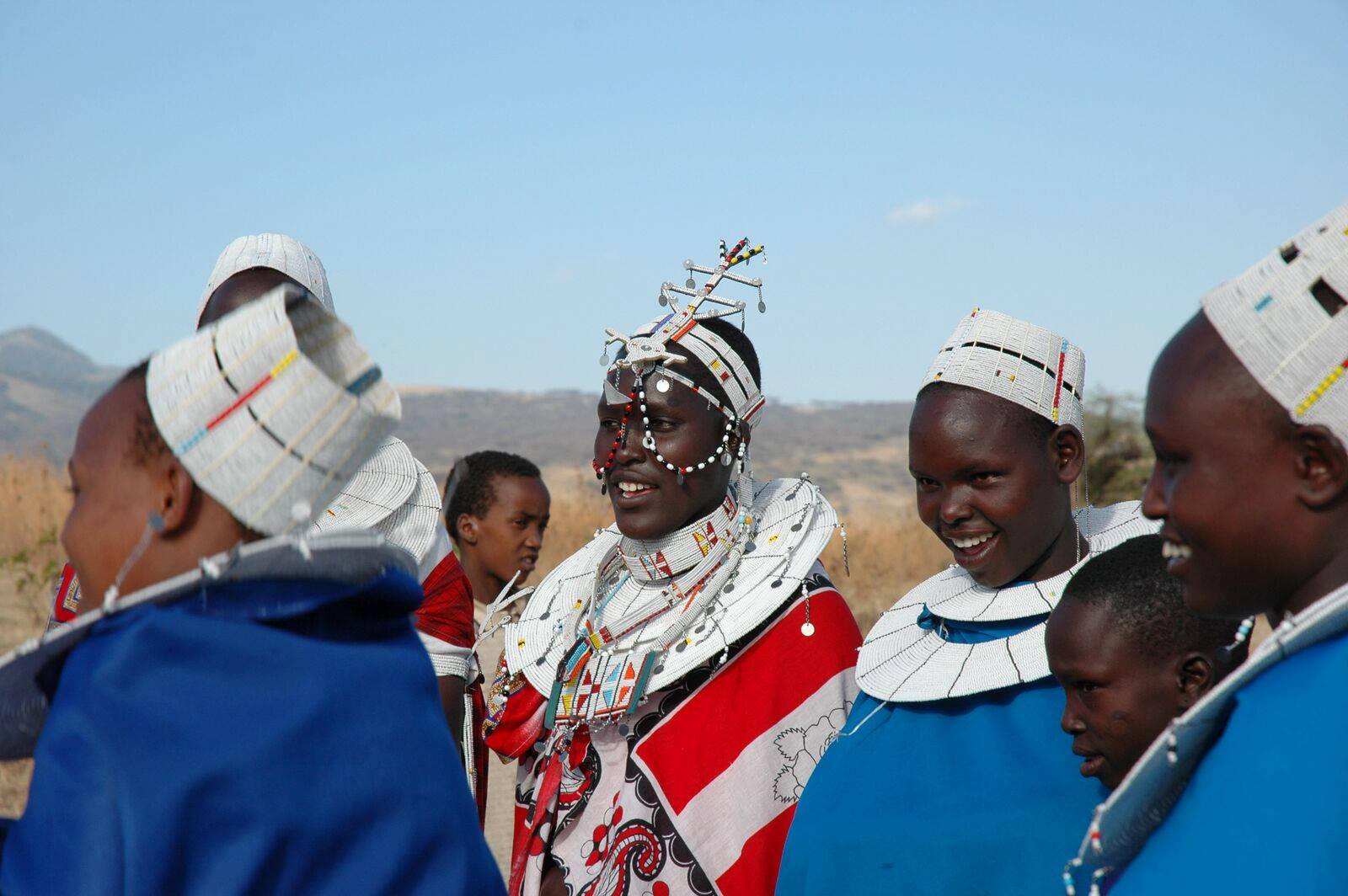 Other native beverages are specific to certain regions and tribes. These are; Mnazi/ Tembo (Coastal region), Mbege ( Kilimanjaro region ), Wanzuki, Gongo. There are also various beers, wines and spirits produced in Tanzania. These include Kilimanjaro beer, Safari beer, Serengeti beer,Konyagi, Banana Wine and many more.
For more information please visit the following sites: Tanzania National Website
Other native beverages are specific to certain regions and tribes. These are; Mnazi/ Tembo (Coastal region), Mbege ( Kilimanjaro region ), Wanzuki, Gongo. There are also various beers, wines and spirits produced in Tanzania. These include Kilimanjaro beer, Safari beer, Serengeti beer,Konyagi, Banana Wine and many more.
For more information please visit the following sites: Tanzania National Website

